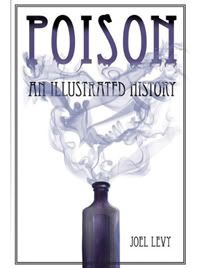
In the interest of starting a tradition and encouraging people reading more non-fiction, I'm going to devote Fridays to reviewing a non-fiction book. Non-fiction is funny a lot of times simply because it often isn't written for young adult readers, specifically high school level. I assume that this has to do with publishers assuming that teenagers are going to use adult books for research papers and that they don't have interest in non-fiction on their own, so much so that Amazon doesn't even really have a non-fiction section for teens. There are some broken down science and technology categories, but these are not so much non-fiction as they are text books or help with homework. So I'm off trying to find non-fiction that might appeal to more than just researchers. I may not get one done every Friday, but I think it deserves a shot.
From Greek philosophers to Russian spies, poisons have a long and colorful history. Easy to obtain and administer, they are often hard to detect or trace. They kill, but they also smooth wrinkles, calm nerves, provide visions, and cure illnesses. The history of poison is also the history of medicine, and it plays a vital role in the histories of science, industry, and agriculture. From arsenic and belladonna to thallium and Zyklon B, Poison explores the nature of toxicity and reveals how poisons intersect with our everyday lives.
(from Amazon.com)
Genre: non-fiction; history; science
Rating: 4.5
Before people think I'm trying to teach the children how to be murderers or knock off a family member, I point out that this is more a cleverly disguised science and history book than anything else.
This is a book that would appeal to teenagers if only for the strange subject matter and the illustrations. The book goes through usages of poisons from murder to medicine, all with sidebars and illustrations all throughout. It's fascinating to see how much a part of history poisons have been. As the book points out, anything in a large enough dose is toxic. Some things seem a little skimmed over, but for a good read this was an enjoyable overview of a strange topic.
No comments:
Post a Comment